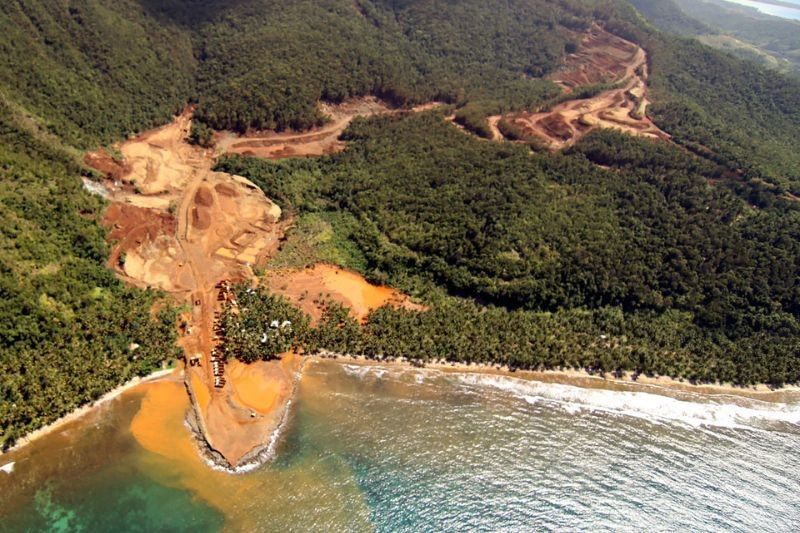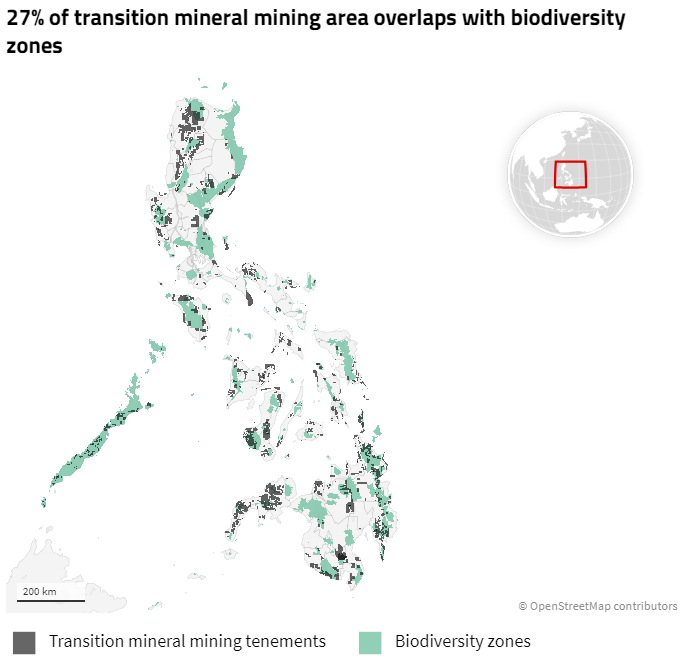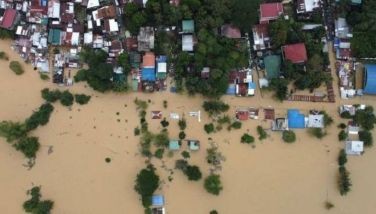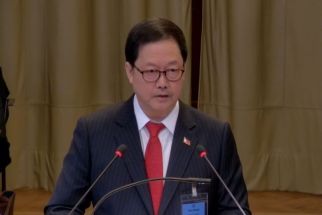'A case of greenwashing': How the Philippines' energy transition comes at the cost of lives, biodiversity

MANILA, Philippines — The Philippines’ ongoing shift to green energy sources is leaving a trail of displaced indigenous communities and devastated land, and lost lives, watchdog Global Witness reported.
Tapping into the country’s large mineral reserves, the Marcos administration has expanded mining efforts to position the Philippines as a key supplier of transition minerals for the global shift to renewable energy.
However, Global Witness’ latest investigation revealed that the country’s extraction of nickel and copper — key transition minerals — has damaged forests, rivers and lives, while exacerbating climate risks like floods and landslides and fueling militarization in mining areas.
Senior investigator Hanna Hindstrom said their analysis of government and civil society data shows that indigenous peoples and their ancestral lands are “bearing the brunt of mining” in the country.
Overlapping biodiversity zones, ancestral lands
Global Witness mapped out where mining and exploration have been permitted, finding that they already cover around 20% of the Philippine landmass.
This expansion has contributed to the loss of 230,000 hectares of tree cover from 2010 to 2023. According to the report, this is equivalent to almost three times the size of New York City.
Biodiversity zones. Meanwhile, about 27% of mining tenements for transition minerals are located in biodiversity zones, protected areas, or Ramsar Sites, which are designated as internationally important under the Convention on Wetlands.

Of all individual mining permits, about half were found encroaching on ecological zones, despite the Philippine Mining Act of 1995 prohibiting mining in legally protected areas.
For nickel mining, the report discovered that nearly half of the total area of existing projects overlaps with the Philippines' key biodiversity areas. Most are located in Palawan, where 100% of the permits fall within biodiversity zones, Hindstrom said.
For copper mining, the encroachment was even larger, with the report noting it had the “biggest territorial overlap” compared to other transition minerals.
In Surigao del Sur, 70% of nickel mining areas and 80% of copper mining areas intersect with biodiversity hotspots.
Mining in the Philippines has evidently caused significant environmental harm, including rivers turning red from nickel extraction and contamination of farmland water sources, Hindstrom said.
She expressed concern over the finding, stressing that the Philippines' forests and mangroves are crucial for mitigating climate change, especially given the country’s high biodiversity and its ranking as the most disaster-prone in the World Risk Index.
Ancestral domains. Indigenous peoples’ homes are also being mined for transition minerals, with 26% of mining zones located within ancestral domains, primarily in Mindanao and northern Luzon.
The Legal Rights and Natural Resources Center found that forests make up three-fourths of the 14 million hectares of land occupied by indigenous communities in the Philippines, highlighting the scale of the impact.
“Nearly a quarter of the area of all types of mining on formally recognized indigenous lands affected Manobo communities, even though they only make up around 7% of the Philippines' indigenous population,” Hindstrom said.
Other Lumad communities severely impacted by mining for the green energy transition include the Mandaya, Mamanwa and Subanen in Mindanao.

About half of the ancestral domains are biodiversity hotspots, which indigenous groups like the Lumad have been safeguarding despite heavy militarization.
Katribu Kalipunan ng Katutubong Mamamayan ng Pilipinas National Coordinator Beverly Longid said that indigenous peoples “have been guardians of biodiversity,” utilizing their “traditional ecological knowledge” to sustain the environment.
Violence tied to mining
Indigenous communities have also risked their lives to prevent land grabbing and unconsented mining projects, while combating militarization, red-tagging, and violence.
According to a previous Global Witness report, the Philippines remains the deadliest country for environmental defenders, with one-third of the total recorded deaths and disappearances from 2012 to 2023 involving indigenous peoples.
RELATED: Philippines still deadliest country in Asia for environmental defenders in 2023 – watchdog
In 2023 alone, indigenous peoples accounted for nearly half of the 17 environmental defenders killed or forcibly disappeared, with 15 of these cases attributed to militarization.
Mining was identified as the leading cause, with half of the cases from 2012 to 2023 linked to its incursions in protected areas and ancestral lands. Most occurred in Mindanao.

“If we continue down this path of greenwashing, we exacerbate the very injustices we seek to solve. The green transition must be just and it must be for all people, not just for the wealthy nations and corporations benefiting from it,” Longid said.
Call for genuine dialogues, indigenous-led conservation
Despite the free, prior and informed consent’s (FPIC) existence under the Indigenous Peoples Rights Act, Longid described its implementation as a “broken promise” as “coercion and misinformation prevail.”
Katribu said there have been several cases where the National Commission on Indigenous People (NCIP) pressured Lumad communities to allow mining projects in their lands.
Sometimes, it would even manufacture consent or manipulate the process, Longid added.
“The FPIC process was meant to be a tool for justice and self-determination, but it's been used as a form of greenwashing for exploitative interests,” she said.
Cordillera People’s Alliance Chairperson Windel Bolinget added that militarization in their communities undermines the FPIC, as it leads to intimidation and prevents true consent.
For a just transition to green energy, indigenous rights groups are calling for stricter implementation of the FPIC process, ensuring genuine consultations and dialogues, and the military’s withdrawal from their lands.
Longid also stressed the need to place indigenous knowledge at the heart of conservation initiatives, giving IP communities a “central role” in managing resources for climate mitigation and biodiversity protection.
Similarly, while acknowledging the urgent need to stop using fossil fuels, Hindstrom said critical measures are needed to protect the environment and communities directly affected.
“The green transition cannot come at the expense of communities and climate-critical biodiversity. We cannot mine our way out of the climate emergency,” she said.
“Lives, rights, ecosystems cannot become accepted collateral damage in the world's scrambling to get to zero,” Hindstrom added.
However, without the government's genuine commitment to include indigenous peoples in the conversation, environmental rights groups fear the Philippines will be drained of its resources, leaving behind nothing but a trail of destruction and lost communities.
- Latest



























